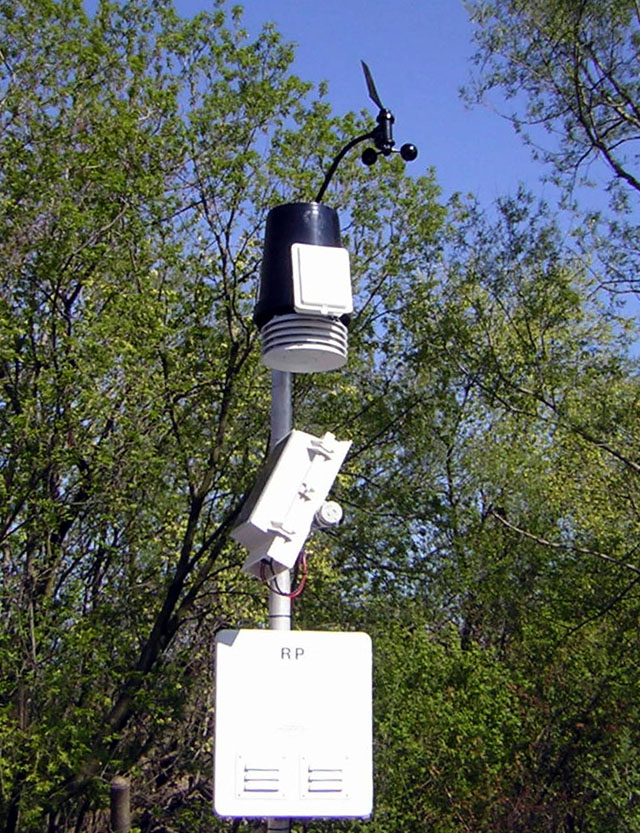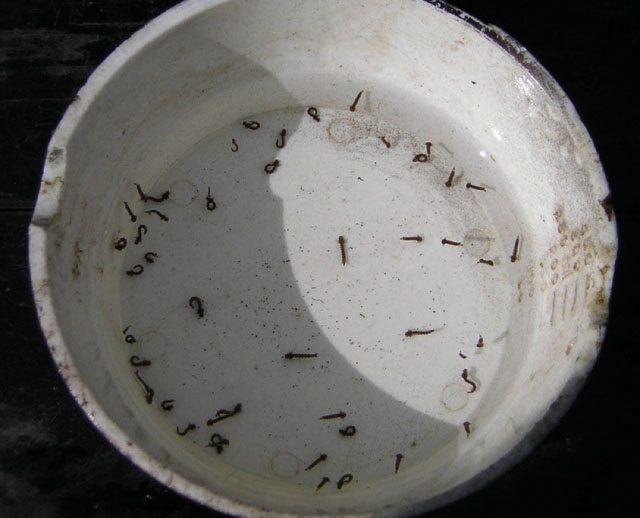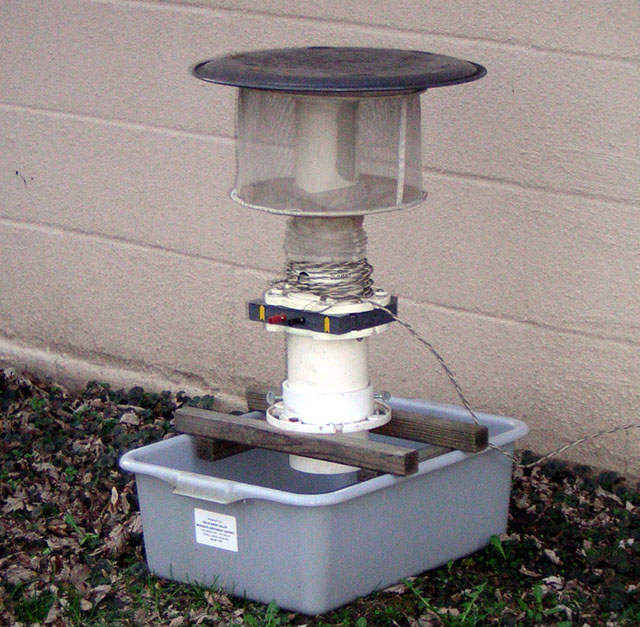Surveillance
Weather Surveillance The weather is the most determining factor in mosquito production. All mosquitoes
spend their larval and pupal stages of development in water. Consequently, rainfall is critical to
their existence. Temperature regulates their rate of development and is a secondary
variable in their life cycle. Over forty species of mosquito are found within Illinois, and each has
environmental conditions best suited to its development. The Aedes vexans and Culex pipiens/restuans
are the primary mosquitoes found within the District. Heavy
rains followed by warm temperatures create the conditions for an explosion in the population of
floodwater mosquitoes, Aedes vexans. In contrast, drier conditions that create areas of
stagnant water are ideal for production of many disease vector mosquitoes as Culex
pipiens/restuans.
The weather is the most determining factor in mosquito production. All mosquitoes
spend their larval and pupal stages of development in water. Consequently, rainfall is critical to
their existence. Temperature regulates their rate of development and is a secondary
variable in their life cycle. Over forty species of mosquito are found within Illinois, and each has
environmental conditions best suited to its development. The Aedes vexans and Culex pipiens/restuans
are the primary mosquitoes found within the District. Heavy
rains followed by warm temperatures create the conditions for an explosion in the population of
floodwater mosquitoes, Aedes vexans. In contrast, drier conditions that create areas of
stagnant water are ideal for production of many disease vector mosquitoes as Culex
pipiens/restuans.
The District monitors rainfall, temperature, and other weather data at four locations throughout
the district. In addition, rainfall and temperature data is obtained from the National Weather
Service at O'Hare Airport.
Mosquito Larvae/Pupae Surveillance Larval/pupal mosquito surveys provide critical information for our control efforts. The surveys
are conducted on a regular basis to determine the extent, type, and concentration of mosquito
populations within the district. Potential mosquito breeding sources are inspected regularly
throughout the season. Larval samples are taken from sites found breeding, and are identified
by the laboratory staff to species. All potential sources are mapped and numbered.
Individual source histories are maintained in a computer database. In addition,
follow-up post-treatment inspections and evaluation help ensure the success of control
procedures.
Larval/pupal mosquito surveys provide critical information for our control efforts. The surveys
are conducted on a regular basis to determine the extent, type, and concentration of mosquito
populations within the district. Potential mosquito breeding sources are inspected regularly
throughout the season. Larval samples are taken from sites found breeding, and are identified
by the laboratory staff to species. All potential sources are mapped and numbered.
Individual source histories are maintained in a computer database. In addition,
follow-up post-treatment inspections and evaluation help ensure the success of control
procedures.
Adult Mosquito Surveillance
Adult mosquito populations within the District are monitored through a network of light traps and gravid traps. These traps take daily samples which are identified by the laboratory staff to
determine the number and types of mosquitoes present.
Disease Vector Surveillance Gravid traps are specialized traps that collect live gravid adult female mosquitoes, primarily
Culex pipiens/restuans. Gravid mosquitoes are females that have taken a blood meal and
are ready to lay eggs. While attempting to lay eggs in the trap's water, they are pulled in by a fan and captured in a net.
Because they have taken at least one blood meal (usually required for egg production), it is more likely that
they have been exposed to WNV.
Gravid traps are specialized traps that collect live gravid adult female mosquitoes, primarily
Culex pipiens/restuans. Gravid mosquitoes are females that have taken a blood meal and
are ready to lay eggs. While attempting to lay eggs in the trap's water, they are pulled in by a fan and captured in a net.
Because they have taken at least one blood meal (usually required for egg production), it is more likely that
they have been exposed to WNV.
The District uses gravid traps to sample the adult
female Culex pipiens/restuans mosquito population to test for the presence of disease viruses as well as to
observe vector mosquito population levels. The samples from these traps are tested in our lab
for the presence of virus with the use of RAMP
(Rapid Analyte Measurement Platform). These tests can be performed in our lab with results known within
minutes. When practical, the samples may be sent to the Illinois Natural History Survey(INHS)
for RT-PCR testing.
Charts are updated as counts and data entry are completed. The higher the mosquito numbers, the longer this may take!
